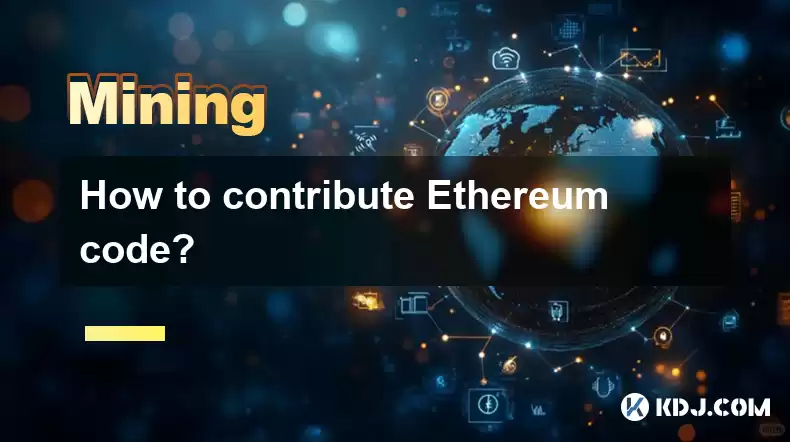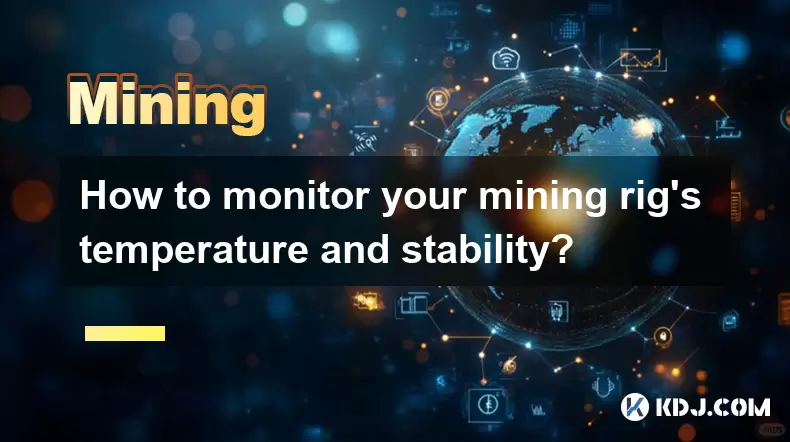-
 Bitcoin
Bitcoin $116400
-0.36% -
 Ethereum
Ethereum $4033
3.40% -
 XRP
XRP $3.302
-1.26% -
 Tether USDt
Tether USDt $1.000
-0.02% -
 BNB
BNB $796.1
1.67% -
 Solana
Solana $177.8
1.89% -
 USDC
USDC $0.9999
0.00% -
 Dogecoin
Dogecoin $0.2314
4.09% -
 TRON
TRON $0.3381
0.14% -
 Cardano
Cardano $0.7989
1.22% -
 Stellar
Stellar $0.4496
-1.84% -
 Chainlink
Chainlink $20.42
9.42% -
 Hyperliquid
Hyperliquid $41.17
0.88% -
 Sui
Sui $3.914
3.77% -
 Bitcoin Cash
Bitcoin Cash $584.7
1.52% -
 Hedera
Hedera $0.2632
-0.54% -
 Avalanche
Avalanche $24.09
3.40% -
 Ethena USDe
Ethena USDe $1.001
-0.02% -
 Litecoin
Litecoin $123.2
1.33% -
 Toncoin
Toncoin $3.318
-0.04% -
 UNUS SED LEO
UNUS SED LEO $8.984
-0.05% -
 Shiba Inu
Shiba Inu $0.00001323
2.85% -
 Uniswap
Uniswap $10.90
4.41% -
 Polkadot
Polkadot $3.999
3.34% -
 Dai
Dai $1.000
0.01% -
 Cronos
Cronos $0.1630
9.64% -
 Bitget Token
Bitget Token $4.484
0.82% -
 Monero
Monero $272.4
2.44% -
 Pepe
Pepe $0.00001173
6.03% -
 Aave
Aave $290.8
2.88%
How to contribute Ethereum code?
Ethereum's open-source development process offers opportunities for contributions ranging from documentation improvements to major protocol enhancements, and community support is a crucial aspect of the project's success.
Feb 24, 2025 at 08:06 pm

How to Contribute to Ethereum Core
Key Points:
- Understanding Ethereum's Development Process: The article will explain Ethereum's development process, including its governance model, development workflow, and tools.
- Coding Standards and Best Practices: This section will provide guidelines for writing high-quality Ethereum code, including coding conventions, security considerations, and testing best practices.
- Contributing Process: The article will outline the steps involved in contributing code to Ethereum, including setting up a development environment, submitting a pull request, and interacting with the development community.
- Getting Started with Small Contributions: This section will guide readers on making their first contributions to Ethereum, starting with smaller tasks like documentation improvements or bug fixes.
- Advanced Contribution Strategies: For experienced developers, this article will discuss advanced contribution strategies, such as working on major features or contributing to security audits.
- Supporting the Ethereum Community: The article will emphasize the importance of contributing to the Ethereum community by participating in discussions, attending events, and mentoring other developers.
1. Understanding Ethereum's Development Process
Ethereum is an open-source project, and its development is governed by the Ethereum Foundation, a non-profit organization that oversees the project's goals and direction. The Ethereum core development team is responsible for building, maintaining, and releasing the Ethereum software.
Ethereum's development workflow is based around monthly development cycles called "hard forks." During hard forks, major updates or changes are made to the Ethereum software. The development cycle begins with the Ethereum Improvement Proposal (EIP) process, where developers submit proposals for new features or improvements. These proposals are discussed and refined by the community, and once approved, they are included in a hard fork release.
- Community Governance: Ethereum's development is guided by a community of active developers, researchers, and users. The community participates in discussions, debates, and decision-making processes through forums, social media, and governance protocols.
- Development Tools: The Ethereum development ecosystem includes a suite of open-source tools and resources, such as the Ethereum Virtual Machine (EVM), the Solidity programming language, and various testing frameworks.
2. Coding Standards and Best Practices
Coding Conventions: When writing Ethereum code, it is essential to follow established coding conventions to ensure consistency and readability. These conventions include guidelines for naming conventions, formatting, and code structure.
Security Considerations: Security is a paramount concern in Ethereum development. Developers must adhere to best practices to prevent vulnerabilities, such as avoiding uninitialized variables, using cryptographic hashes properly, and handling gas costs efficiently.
Testing Best Practices: Robust testing is crucial for ensuring the reliability of Ethereum code. Developers should employ both unit testing and integration testing to validate the functionality of their code and detect potential issues early on. They can utilize Ethereum's own testing framework, "py.test," and third-party tools like "web3.py" for testing.
- Documentation: Providing clear and comprehensive documentation is vital. This includes creating READMEs, inline code comments, and tutorials to help other developers understand the code's purpose, usage, and limitations.
- Design Patterns: Ethereum development often involves applying design patterns specific to blockchain applications. A good understanding of these patterns, such as "singletons," "facades," and "proxies," can enhance the efficiency and maintainability of the code.
3. Contributing Process
Development Environment Setup: To contribute code to Ethereum, you will need to set up a development environment on your local machine. This involves installing the Ethereum client, configuring a node, and setting up a preferred development toolchain.
Contributing Guidelines: Before submitting code, you should review the Ethereum Contributing Guidelines. These guidelines provide detailed instructions on how to format pull requests, write commit messages, and follow the coding conventions.
Pull Request Submission: To contribute code, you will create a pull request on GitHub. The pull request process allows the development team to review and discuss your changes before merging them into the main codebase.
- Code Reviews: Once you submit a pull request, the Ethereum core development team or other community members will review your code. They will provide feedback on coding style, functionality, and potential improvements.
- Revision and Discussion: Collaboration is key in the development process. Be open to suggestions and participate in discussions to improve the code and address any concerns raised.
4. Getting Started with Small Contributions
Documentation Improvements: If you're new to Ethereum development, start by improving the project's documentation. This involves updating READMEs, refining existing documentation, or creating new tutorials.
Bug Fixes: Small bug fixes are a great way to dip your toes into code contributions. Look for issues marked as "good first issue" or "easy fix" in the Ethereum GitHub repository to find manageable tasks.
Test Case Contributions: Adding test cases to existing code is a valuable contribution that ensures software quality. Identify areas where additional test coverage is needed and add tests to improve the project's robustness.
- Code Refactoring: Refactoring existing codebase to improve its readability and organization is another way to contribute without making major functional changes. Identify areas where code can be simplified, commented, or organized more effectively.
5. Advanced Contribution Strategies
Developing New Features: For experienced developers, contributing new features to the core codebase is a significant step. Start by researching the project's roadmap, proposing new EIPs, and working collaboratively with the core team.
Security Audits: Security audits play a crucial role in safeguarding Ethereum's codebase. If you have security expertise, you can contribute by performing security audits, identifying vulnerabilities, and proposing fixes.
Protocol Design: The Ethereum protocol is constantly evolving, creating opportunities for contributions in protocol design, incentive mechanisms, and consensus algorithms. Engage in discussions and research to identify areas where your expertise can benefit the protocol's development.
- Performance Optimization: Ethereum's performance is critical for scalability and user experience. You can contribute by optimizing existing code, proposing new techniques, or implementing solutions to improve the network's efficiency and throughput.
6. Supporting the Ethereum Community
Community Involvement: Active participation in the Ethereum community is an important aspect of contributing. Join discussions on forums and social media, and attend conferences and meetups to connect with fellow developers and contribute your ideas.
Mentorship and Outreach: Supporting new developers is essential for Ethereum's ecosystem growth. Mentor individuals, participate in educational programs, and contribute to efforts that encourage diversity and inclusion in the blockchain space.
Event Participation: Attend hackathons, workshops, and conferences related to Ethereum to share your knowledge, collaborate with others, and learn about the latest developments in the ecosystem.
Disclaimer:info@kdj.com
The information provided is not trading advice. kdj.com does not assume any responsibility for any investments made based on the information provided in this article. Cryptocurrencies are highly volatile and it is highly recommended that you invest with caution after thorough research!
If you believe that the content used on this website infringes your copyright, please contact us immediately (info@kdj.com) and we will delete it promptly.
- Decentralized Data: Taking the Driver's Seat in the Data Economy
- 2025-08-09 14:30:11
- Bitcoin vs. Gold: The Store-of-Value Showdown in the Digital Age
- 2025-08-09 14:30:11
- BlockDAG, Stellar, and Crypto Adoption: Navigating the Hype
- 2025-08-09 14:50:12
- Litecoin Price Surge: Riding the Wave of Institutional Interest and ETF Hopes
- 2025-08-09 14:50:12
- Chainlink's Wild Ride: Whales Are Still Loading Up on LINK!
- 2025-08-09 15:10:11
- Ruvi AI: Solana's New Challenger Dominating Token Sales with AI Innovation
- 2025-08-09 14:55:15
Related knowledge

What is "proof-of-work" and how does it relate to mining?
Aug 07,2025 at 02:03pm
Understanding the Concept of Proof-of-WorkProof-of-work (PoW) is a consensus mechanism used in blockchain networks to validate transactions and secure...

What are the differences between mining on Windows vs. Linux?
Aug 06,2025 at 11:29pm
Overview of Cryptocurrency Mining PlatformsCryptocurrency mining involves using computational power to solve complex cryptographic puzzles and validat...

How to use an old computer for cryptocurrency mining?
Aug 07,2025 at 12:42pm
Understanding the Feasibility of Using an Old Computer for MiningUsing an old computer for cryptocurrency mining may seem outdated, but it is still te...

Can you mine cryptocurrency using solar power?
Aug 07,2025 at 12:00am
Understanding the Basics of Cryptocurrency MiningCryptocurrency mining involves validating transactions on a blockchain network by solving complex cry...

How to monitor your mining rig's temperature and stability?
Aug 09,2025 at 09:43am
Understanding the Importance of Temperature Monitoring in Mining RigsMaintaining optimal temperature levels in a mining rig is essential for long-term...

How to build a mining rig inside a PC case?
Aug 06,2025 at 11:01pm
Understanding the Basics of a Mining Rig in a PC CaseBuilding a mining rig inside a PC case involves transforming a standard computer chassis into a d...

What is "proof-of-work" and how does it relate to mining?
Aug 07,2025 at 02:03pm
Understanding the Concept of Proof-of-WorkProof-of-work (PoW) is a consensus mechanism used in blockchain networks to validate transactions and secure...

What are the differences between mining on Windows vs. Linux?
Aug 06,2025 at 11:29pm
Overview of Cryptocurrency Mining PlatformsCryptocurrency mining involves using computational power to solve complex cryptographic puzzles and validat...

How to use an old computer for cryptocurrency mining?
Aug 07,2025 at 12:42pm
Understanding the Feasibility of Using an Old Computer for MiningUsing an old computer for cryptocurrency mining may seem outdated, but it is still te...

Can you mine cryptocurrency using solar power?
Aug 07,2025 at 12:00am
Understanding the Basics of Cryptocurrency MiningCryptocurrency mining involves validating transactions on a blockchain network by solving complex cry...

How to monitor your mining rig's temperature and stability?
Aug 09,2025 at 09:43am
Understanding the Importance of Temperature Monitoring in Mining RigsMaintaining optimal temperature levels in a mining rig is essential for long-term...

How to build a mining rig inside a PC case?
Aug 06,2025 at 11:01pm
Understanding the Basics of a Mining Rig in a PC CaseBuilding a mining rig inside a PC case involves transforming a standard computer chassis into a d...
See all articles

























































































